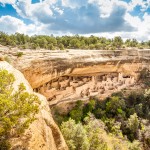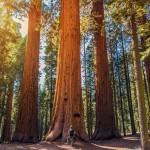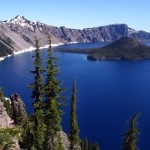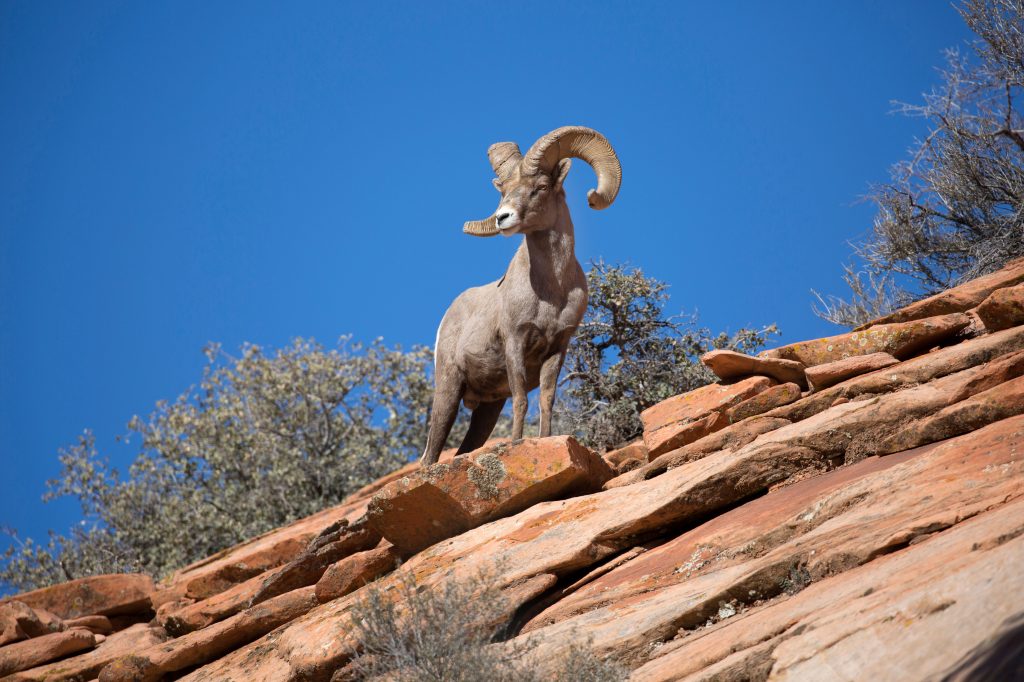Rocky Mountain National Park - A Spectacular Mountain Environment
One of the most stunning mountain ranges on the planet, stretching over 3000 miles from New Mexico in the US to British Columbia in Canada, the area known as Rocky Mountain National Park is in the state of Colorado and consists of 265,000+ acres of this immense range of mountains (1). The west and east sides of the range (which straddle the Continental Divide) are different in character, meaning there are microclimates and wide variation in plant and animal life.
2015 is the 100th anniversary of the park; it was signed into law by Woodrow Wilson on 26th January 1915 though discussion had gone on for many years to protect part of the range, its ecology and its geology. The area of the National Park was much smaller in 1915 than it is now, with a substantial area added to the NPS jurisdiction in 1929 (The Never Summer Mountains) (2, p57). It was recognized as being nationally important, not just of the sheer immensity of the mountain range and the volcanic nature along parts of it, but for the climate and its importance to continental geology.
In 2013, severe flooding affected the park and though much of the ecology of Rocky Mountains National Park was unaffected, as we will see there are knock on effects for extended communities, demonstrating that infrastructure of any park is vital to areas – emphasizing once again why it is important to preserve (3).
History of Rocky Mountain National Park
As with most open areas in this part of the continent, the human antiquity of the park is clearly demonstrated through archaeological finds. Stone tools have been found throughout the park and across the mountain range dating to around 11,000BP (5 p29). Heaviest use has been traced to around 6,500 years ago when many species of fauna were present, encouraging human settlers into the area. It also seems around this time that the climate had become conducive to crop farming as well as rich for hunting and foraging. Evidence suggests that seasonal migration was low, possibly meaning continued year-round occupation (4), a definite change from evidence of earlier occupation which was certainly seasonal. Much later, we see evidence of bow and arrow used for hunting (2, p9).
Folklore records suggest that modern tribes (or the ancestors of modern tribes) arrived in this part of Colorado in the early 1600s. Particularly, the Ute, Arapaho and the Cheyenne with the latter group arriving in the 19th (2, p9-10) century just prior to the interests of modern Americans piqued by the immense mountain range. The Arapaho and Cheyenne hunted in the east and the Ute in the west. Today, we can see the remains of their teepees, hunting materials and artefacts of daily life at the various visitor centers and museums across the park. Many of the mountain passes and trails are those cut by the tribes moving about the area.
Part of the main reason for establishing this particular area of Rocky Mountain National Park as a protected area, was because of the land grab that had taken place in the 19th century. An Anglo-Irish peer by the name of Lord Dunraven attempted to use the Homestead Act to seize a large amount of land to set it up as a private hunting ground. Local feeling was one of outrage, leading to calls for the Federal Government to do something to protect this and other attempted land grabs across the country. Dunraven was foiled by the fact that he was not a US citizen (6, p48) yet he managed to buy land from others who had legally bought it. He soon came up against problematic locals when he could do nothing to stop others from settling on “his” land and setting up their own homesteads.
At the same time, entrepreneurs became interested in the potential for mining in the Rocky Mountains, particularly in Colorado areas which would later become the National Park area (7, p8). The ore turned out to be low grade and low demand, the business potential and the towns that formed there quickly failed. The abandoned mines, and the mineral resources that they were hoping to capitalize on, are an important part of the RMNP’s past today.
Creation of the park is largely down to one man – Enos Mills who visited as a young boy and became fascinated with it (8). Even as a 14-year-old boy, he was concerned with the preservation of The Rocky Mountains and in later life campaigned for the area to have a National Park established for at least part of the enormous range. He got his wish when, in 1915, legislation passed. The 1920s saw a massive expansion in tourism, including a railroad and the building of many lodges that are part of the history of the park – and many are protected monuments in themselves.
The Flora of the Rocky Mountains
Rocky Mountain National Park has a diverse ecosystem, thanks to the varied elevations and the climatic differences caused by the Continental Divide. Its elevations are amongst the highest on the North American continent, ranging from 7.860ft to 14,259ft. This creates four major and distinct ecosystems (9):
- Montane: mountain meadows that support the widest range of plant and animal life in the park. The south side meadows are drier and those on the northern slopes are wetter. Ponderosa pine is present in both areas, but a little sparser in the south and more spread apart. Douglas fir and other types of pine are present in the north, reflecting the damper environment. Both areas also have local herbs and shrubs. Not much in the way of the makeup of plant life separates the north and the south, but they look different thanks to the water supply.
- Subalpine Zone: cold most of the year round, this high elevation is defined by evergreens such as douglas fir and several types of spruce. Mountain lakes also dominate so you will find limber pine and elephantella around the waterways. The cold environment means shrubs and trees are often short and deformed, in some cases with leaves only on one side. Small areas of meadow grow where there is the most shelter from the elements.
- Tundra: The very high elevations means life up here is sparse but what does live clings to shelter and must brace cold winds and rain; fully 1/3 of the park is above the tree line. Visitors to this high elevation are surprised to see flowering plants up here, but they are largely alpine species with red leaves (that can convert the light to heat) and are substantial enough to withstand the elements
- Glacier: The landscape is still largely glacial with ice flows still forming the valleys of the park and providing vital meltwater during the spring and summer months.
Plant Conservation Issues
Two major issues in this decade alone have proven of great concern to NPS employees working at Rocky Mountain National Park. Both natural disasters, they have in various ways impacted the landscape. The first was a massive wildfire in 2010; the second was extensive flooding in 2013 (3). Both are vital elements of the natural processes of The Rocky Mountains that are expected to become more common as the impact of climate change takes hold (10, p13). Furthermore, the Union of Concerned Scientists also point to significant drought as a potential ongoing problem – which is the case for any glacial landscape that relies to a certain degree on spring meltwater keeping the ground moist throughout the year (10, p2-3; 11).
Like most national parks in the US, or indeed any natural habitat or designated wilderness, there is a problem at Rocky Mountain National Park with invasive plant species. Of particular note are the leafy spurge and the Canadian thistle (12). If left unchecked, both can quickly take over an area and drive out native species (some of which may be delicate). The Canada thistle in particular is a good post-fire colonizer, spreading and settling quickly long before anything else has a real chance to recover.
It is also to the animal kingdom – and particularly native animal species – to see another major threat to our ecology. Since the turn of the millennium, the Rocky Mountains and other woodland habitats like it have seen a massive upsurge in populations of bark beetles (10, p1). Reports of the bark beetle being a “tree killer” is not sensationalism, a combination of a warming climate and a drier climate have massively increased their population, devastating areas of woodland. It has been estimated that an area the size of Colorado has been lost to this beetle alone (10, p6).
The Fauna of Rocky Mountain National Park
Just as Rocky Mountain National Park is home to a diverse range of plant life, it is also home to a wide range of native and exotic animal species. Native mammals include beaver, black bear, bighorn sheep, coyote and mountain lion, pika, squirrels and chipmunks (13). The varied dry and wet climate also means you will find many common species of fish and amphibians.
The native greenback cutthroat trout as listed Federally as an endangered species (14). A cold-water fish, the greenback cutthroat trout are not endemic to any one particular fresh water type or temperature. Indeed, they migrate from river to waterfall to lakes throughout their lifecycle as the temperature and food supply varies. There is still much to learn about this species as their numbers underwent serious and rapid decline in numbers in the early 1800s. Rocky Mountain National Park is prime fishing area; in the late 19th century, many waterways without historical fish stocks had cod and salmon and other related species placed into them (13). Today, the NPS carefully manages these species and since 1936 have been far more careful about which waterways to supply and which species to place into them – species native to Colorado in general or Rocky Mountain National Park specifically.
Insects are always an important part of the makeup of an ecology, particularly woodland, and this is no different at Rocky Mountain National Park (15). Bees, dragonflies, beetles, moths, spiders and others are present in the park. Monitoring of insects of all classes have been slow and it is the least understood class in the park, impact on the wider ecology and on the plants as well as how the changing climate affects insect species, is under review with a large program that started in 2012.
Fauna Conservation Issues
The threat to the greenback cutthroat trout mentioned above is largely understood to be due to overfishing in the early 1800s, but efforts to recover their number were mostly successful for a while. However, with the introduction of non-native species, particular types of salmon and trout, has increased a level of competition from which they are finding it difficult to recover (14). A further threat now exists in that water levels are dropping due to reducing levels of ice during the winter. This is why glaciers remain important to many of our higher elevation ecologies: people, plants animal species living at the lower elevations below rely on the summer glacial melt and winter increase of ice levels. The water table will drop, leading to the drying up of some waterways – leading to greater threats to already threatened animal and plant species.
Though still common across its western range (16), the boreal toad has seen drastic decline in population numbers in the last 4-5 decades in several pockets, particularly in Rocky Mountain National Park and Yosemite National Park. It seems that were the ecology is delicate and sensitive to change; species like the boreal toad are suffering. Yet researchers have yet to find a clear reason for this decline. Soil acidification has been discounted; climate change is a factor but which specific element is unclear. We know that the eggs have been increasingly susceptible to fungus, so the drop in numbers could be due to a higher mortality rate during the egg stage.
Invasive species are not just limited to plants; we are beginning now to understand how animal species can affect ecology when introduced to an area. Of particular concern for Rocky Mountain National Park is the mountain goat. Common in this type of upland throughout the North American continent, they are not native to Rocky Mountain have had a critical effect on native (17) animal and plant species there – having brought disease to native bighorn sheep amongst other things. It is believed they came up from the south, from areas where they are thriving and spread into areas like RMNP. The issue is of such concern that NPS staff are instructed to capture every one they find to return them to native habitats.
Ongoing Ecological Threats and Conservation Challenges
The NPS working at Rocky Mountain National Park has largely kept invasive species (plant and animal) in check and has a clear strategy for managing the delicate ecosystem of the uplands and valleys. Plant colonizers are recorded and where preferable, removed or burnt away to encourage growth of native species. This is of particular note to combatting the increase in wildfires where certain plant species colonize quickly after the fires subside.
Clearly, the biggest threat to the park is climate change; it will be a long battle for now and for the future to combat what is expected to be a very difficult task. Both wildfires and floods have increased in recent years – with one major instance of both since 2010; records have shown a very concerning 73% increase in wildfires between 1984 and 2011 (10, p14). The mountain glaciers upon which the ecosystem relies could be gone in summer (18, p1). The aesthetic of the park may concern the visitor who is used to seeing snowy peaks, but is the least of the concerns for the NPS who are concerned about the knock-on effect of the loss of tundra. Early glacial melt will cause floods, failure to form ice and snow on the peaks will lead to drought and drying up of the important waterways and the water table which in turn will see a further increase in wildfires across the park (10, p14-15). As noted above, climate change is also expected to encourage tree-killing beetles.
Rocky Mountain National Park can be considered a microcosm of the global effects of climate change. In the USA, arguably no other landscape has already demonstrated the potential for the effects of climate change on the planet. No other place in the US has recorded such a large temperature increase; severe dryness caused the worst forest fires in the park’s history; average temperature rose more in the previous few decades than at any time period since records at the park began in 1895 (10, p38). This is the one major challenge for the NPS at one of the country’s best-known and most important national parks.
Sources
(1) Perry, P.J. 2008: Rocky Mountain National Park. Publisher: Arcadia Publishing
(2) http://www.nps.gov/romo/planyourvisit/flood-impacts-and-closures.htm
(3) http://www.nps.gov/romo/learn/management/upload/stone-artifacts.pdf
(4) Gunnerson, J.H. 1989: Archeology of the High Plains. Publisher: USDA Forest Service
(5) Perry, P. 2011: Speaking Ill of the Dead: Jerks in Colorado History. Publisher: Rowman & Littlefield.
(6) http://www.nps.gov/romo/learn/management/upload/romo_geo_overview.pdf
(7) http://coloradovirtuallibrary.org/content/enos-mills
(8) http://www.nps.gov/romo/learn/nature/naturalfeaturesandecosystems.htm
(9) http://www.ucsusa.org/sites/default/files/attach/2014/09/Rocky-Mountain-Forests-at-Risk-Full-Report.pdf
(10) http://www.nps.gov/romo/learn/nature/waterquality.htm
(11) http://www.nps.gov/romo/learn/nature/nonnativespecies.htm
(12) http://www.nps.gov/romo/learn/nature/animals.htm
(14) http://www.nps.gov/romo/learn/nature/insects.htm
(15) http://www.iucnredlist.org/details/3179/0
(16) http://conps.org/wp-content/uploads/2015/05/Mountain-Goat-Impacts-RMNP.pdf
(17) https://www.nrdc.org/land/parks/gw/execsum.pdf










